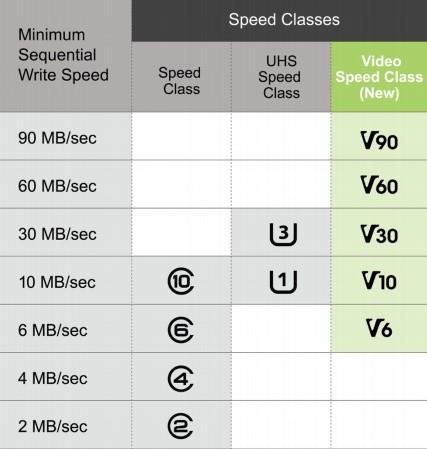多线程队列满了后会怎么样(多线程中的事务回滚)
来源:blog.csdn.net/weixin_43225491/
article/details/117705686
- 背景介绍
- 公用的类型和方法
- 示例事务不成功操作

背景介绍
1,最近有一个大数据量插入的操作入库的业务场景,需要先做一些其他修改操作,然后在执行插入操作,由于插入数据可能会很多,用到多线程去拆分数据并行处理来提高响应时间,如果有一个线程执行失败,则全部回滚。
2,在spring中可以使用@Transactional注解去控制事务,使出现异常时会进行回滚,在多线程中,这个注解则不会生效,如果主线程需要先执行一些修改数据库的操作,当子线程在进行处理出现异常时,主线程修改的数据则不会回滚,导致数据错误。
3,下面用一个简单示例演示多线程事务。
基于 Spring Boot MyBatis Plus Vue & Element 实现的后台管理系统 用户小程序,支持 RBAC 动态权限、多租户、数据权限、工作流、三方登录、支付、短信、商城等功能。
项目地址:https://github.com/YunaiV/ruoyi-vue-pro
公用的类和方法
/** * 平均拆分list方法. * @param source * @param n * @param <T> * @return */ public static <T> List<List<T>> averageAssign(List<T> source,int n){ List<List<T>> result=new ArrayList<List<T>>(); int remaider=source.size()%n; int number=source.size()/n; int offset=0;//偏移量 for(int i=0;i<n;i ){ List<T> value=null; if(remaider>0){ value=source.subList(i*number offset, (i 1)*number offset 1); remaider--; offset ; }else{ value=source.subList(i*number offset, (i 1)*number offset); } result.add(value); } return result; } /** 线程池配置 * @version V1.0 */ public class ExecutorConfig { private static int maxPoolSize = Runtime.getRuntime().availableProcessors(); private volatile static ExecutorService executorService; public static ExecutorService getThreadPool() { if (executorService == null){ synchronized (ExecutorConfig.class){ if (executorService == null){ executorService = newThreadPool(); } } } return executorService; } private static ExecutorService newThreadPool(){ int queueSize = 500; int corePool = Math.min(5, maxPoolSize); return new ThreadPoolExecutor(corePool, maxPoolSize, 10000L, TimeUnit.MILLISECONDS, new LinkedBlockingQueue<>(queueSize),new ThreadPoolExecutor.AbortPolicy()); } private ExecutorConfig(){} } /** 获取sqlSession * @author 86182 * @version V1.0 */ @Component public class SqlContext { @Resource private SqlSessionTemplate sqlSessionTemplate; public SqlSession getSqlSession(){ SqlSessionFactory sqlSessionFactory = sqlSessionTemplate.getSqlSessionFactory(); return sqlSessionFactory.openSession(); } }基于微服务的思想,构建在 B2C 电商场景下的项目实战。核心技术栈,是 Spring Boot Dubbo 。未来,会重构成 Spring Cloud Alibaba 。
项目地址:https://github.com/YunaiV/onemall
示例事务不成功操作
/** * 测试多线程事务. * @param employeeDOList */ @Override @Transactional public void saveThread(List<EmployeeDO> employeeDOList) { try { //先做删除操作,如果子线程出现异常,此操作不会回滚 this.getBaseMapper().delete(null); //获取线程池 ExecutorService service = ExecutorConfig.getThreadPool(); //拆分数据,拆分5份 List<List<EmployeeDO>> lists=averageAssign(employeeDOList, 5); //执行的线程 Thread []threadArray = new Thread[lists.size()]; //监控子线程执行完毕,再执行主线程,要不然会导致主线程关闭,子线程也会随着关闭 CountDownLatch countDownLatch = new CountDownLatch(lists.size()); AtomicBoolean atomicBoolean = new AtomicBoolean(true); for (int i =0;i<lists.size();i ){ if (i==lists.size()-1){ atomicBoolean.set(false); } List<EmployeeDO> list = lists.get(i); threadArray[i] = new Thread(() -> { try { //最后一个线程抛出异常 if (!atomicBoolean.get()){ throw new ServiceException("001","出现异常"); } //批量添加,mybatisPlus中自带的batch方法 this.saveBatch(list); }finally { countDownLatch.countDown(); } }); } for (int i = 0; i <lists.size(); i ){ service.execute(threadArray[i]); } //当子线程执行完毕时,主线程再往下执行 countDownLatch.await(); System.out.println("添加完毕"); }catch (Exception e){ log.info("error",e); throw new ServiceException("002","出现异常"); }finally { connection.close(); } }数据库中存在一条数据:
//测试用例 @RunWith(SpringRunner.class) @SpringBootTest(classes = { ThreadTest01.class, MainApplication.class}) public class ThreadTest01 { @Resource private EmployeeBO employeeBO; /** * 测试多线程事务. * @throws InterruptedException */ @Test public void MoreThreadTest2() throws InterruptedException { int size = 10; List<EmployeeDO> employeeDOList = new ArrayList<>(size); for (int i = 0; i<size;i ){ EmployeeDO employeeDO = new EmployeeDO(); employeeDO.setEmployeeName("lol" i); employeeDO.setAge(18); employeeDO.setGender(1); employeeDO.setIdNumber(i "XX"); employeeDO.setCreatTime(Calendar.getInstance().getTime()); employeeDOList.add(employeeDO); } try { employeeBO.saveThread(employeeDOList); System.out.println("添加成功"); }catch (Exception e){ e.printStackTrace(); } } }测试结果:
可以发现子线程组执行时,有一个线程执行失败,其他线程也会抛出异常,但是主线程中执行的删除操作,没有回滚,@Transactional注解没有生效。
使用sqlSession控制手动提交事务
@Resource SqlContext sqlContext; /** * 测试多线程事务. * @param employeeDOList */ @Override public void saveThread(List<EmployeeDO> employeeDOList) throws SQLException { // 获取数据库连接,获取会话(内部自有事务) SqlSession sqlSession = sqlContext.getSqlSession(); Connection connection = sqlSession.getConnection(); try { // 设置手动提交 connection.setAutoCommit(false); //获取mapper EmployeeMapper employeeMapper = sqlSession.getMapper(EmployeeMapper.class); //先做删除操作 employeeMapper.delete(null); //获取执行器 ExecutorService service = ExecutorConfig.getThreadPool(); List<Callable<Integer>> callableList = new ArrayList<>(); //拆分list List<List<EmployeeDO>> lists=averageAssign(employeeDOList, 5); AtomicBoolean atomicBoolean = new AtomicBoolean(true); for (int i =0;i<lists.size();i ){ if (i==lists.size()-1){ atomicBoolean.set(false); } List<EmployeeDO> list = lists.get(i); //使用返回结果的callable去执行, Callable<Integer> callable = () -> { //让最后一个线程抛出异常 if (!atomicBoolean.get()){ throw new ServiceException("001","出现异常"); } return employeeMapper.saveBatch(list); }; callableList.add(callable); } //执行子线程 List<Future<Integer>> futures = service.invokeAll(callableList); for (Future<Integer> future:futures) { //如果有一个执行不成功,则全部回滚 if (future.get()<=0){ connection.rollback(); return; } } connection.commit(); System.out.println("添加完毕"); }catch (Exception e){ connection.rollback(); log.info("error",e); throw new ServiceException("002","出现异常"); }finally { connection.close(); } } // sql <insert id="saveBatch" parameterType="List"> INSERT INTO employee (employee_id,age,employee_name,birth_date,gender,id_number,creat_time,update_time,status) values <foreach collection="list" item="item" index="index" separator=","> ( #{item.employeeId}, #{item.age}, #{item.employeeName}, #{item.birthDate}, #{item.gender}, #{item.idNumber}, #{item.creatTime}, #{item.updateTime}, #{item.status} ) </foreach> </insert>数据库中的一条数据:
测试结果:抛出异常,
删除操作的数据回滚了,数据库中的数据依旧存在,说明事务成功了。
成功操作示例:
@Resource SqlContext sqlContext; /** * 测试多线程事务. * @param employeeDOList */ @Override public void saveThread(List<EmployeeDO> employeeDOList) throws SQLException { // 获取数据库连接,获取会话(内部自有事务) SqlSession sqlSession = sqlContext.getSqlSession(); Connection connection = sqlSession.getConnection(); try { // 设置手动提交 connection.setAutoCommit(false); EmployeeMapper employeeMapper = sqlSession.getMapper(EmployeeMapper.class); //先做删除操作 employeeMapper.delete(null); ExecutorService service = ExecutorConfig.getThreadPool(); List<Callable<Integer>> callableList = new ArrayList<>(); List<List<EmployeeDO>> lists=averageAssign(employeeDOList, 5); for (int i =0;i<lists.size();i ){ List<EmployeeDO> list = lists.get(i); Callable<Integer> callable = () -> employeeMapper.saveBatch(list); callableList.add(callable); } //执行子线程 List<Future<Integer>> futures = service.invokeAll(callableList); for (Future<Integer> future:futures) { if (future.get()<=0){ connection.rollback(); return; } } connection.commit(); System.out.println("添加完毕"); }catch (Exception e){ connection.rollback(); log.info("error",e); throw new ServiceException("002","出现异常"); // throw new ServiceException(ExceptionCodeEnum.EMPLOYEE_SAVE_OR_UPDATE_ERROR); } }测试结果:
数据库中的数据:
删除的删除了,添加的添加成功了,测试成功。
,
免责声明:本文仅代表文章作者的个人观点,与本站无关。其原创性、真实性以及文中陈述文字和内容未经本站证实,对本文以及其中全部或者部分内容文字的真实性、完整性和原创性本站不作任何保证或承诺,请读者仅作参考,并自行核实相关内容。文章投诉邮箱:anhduc.ph@yahoo.com














